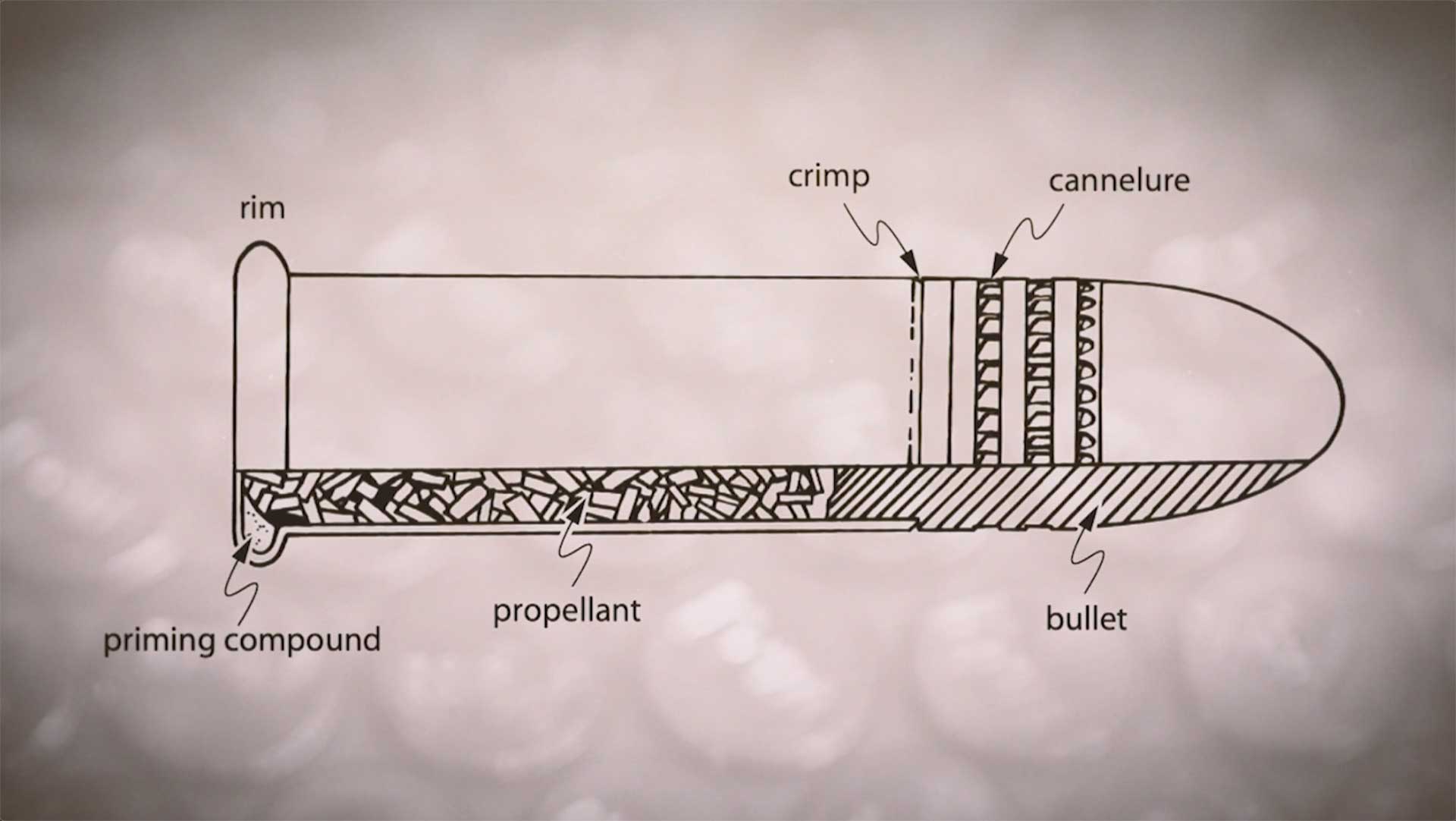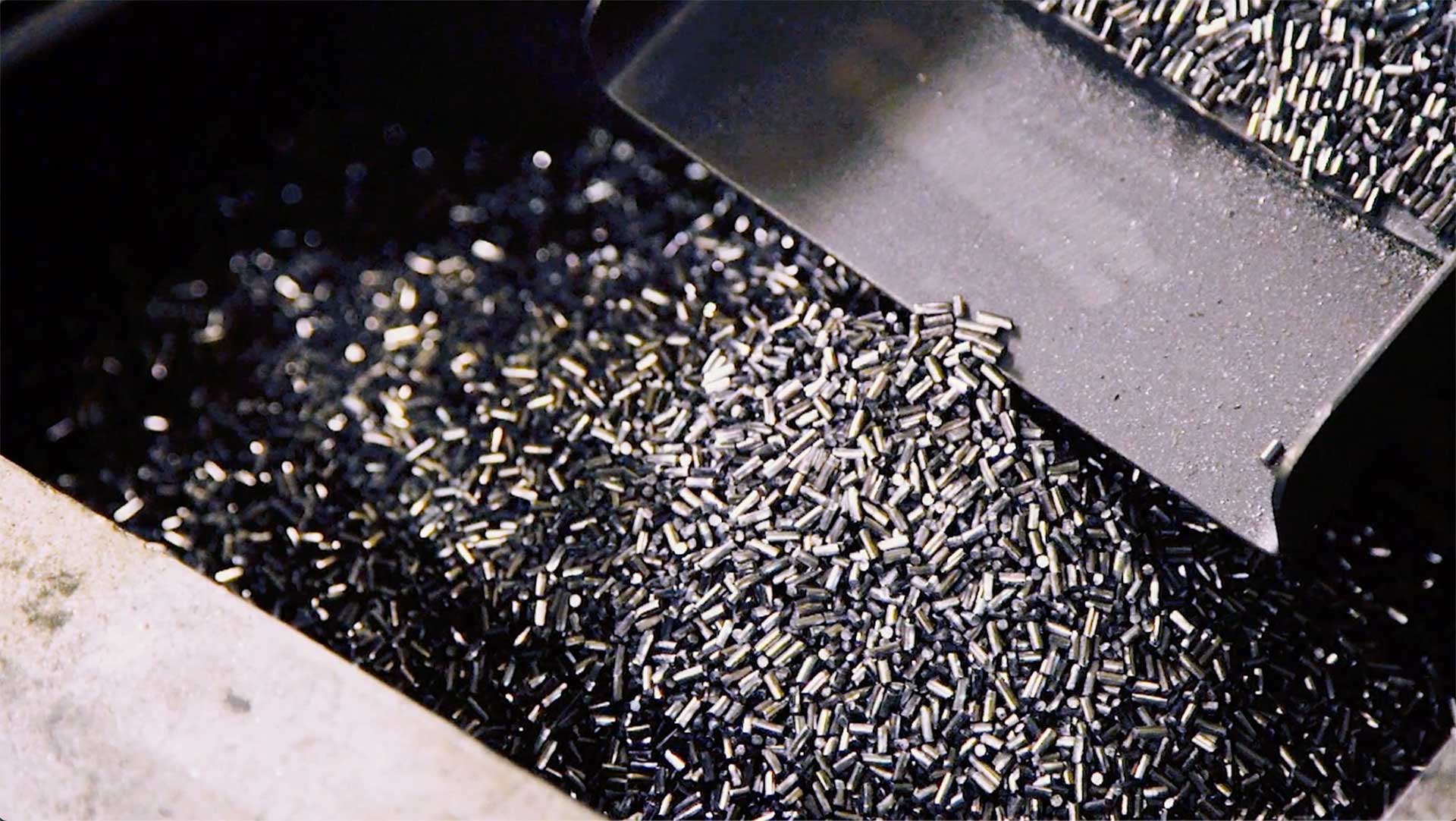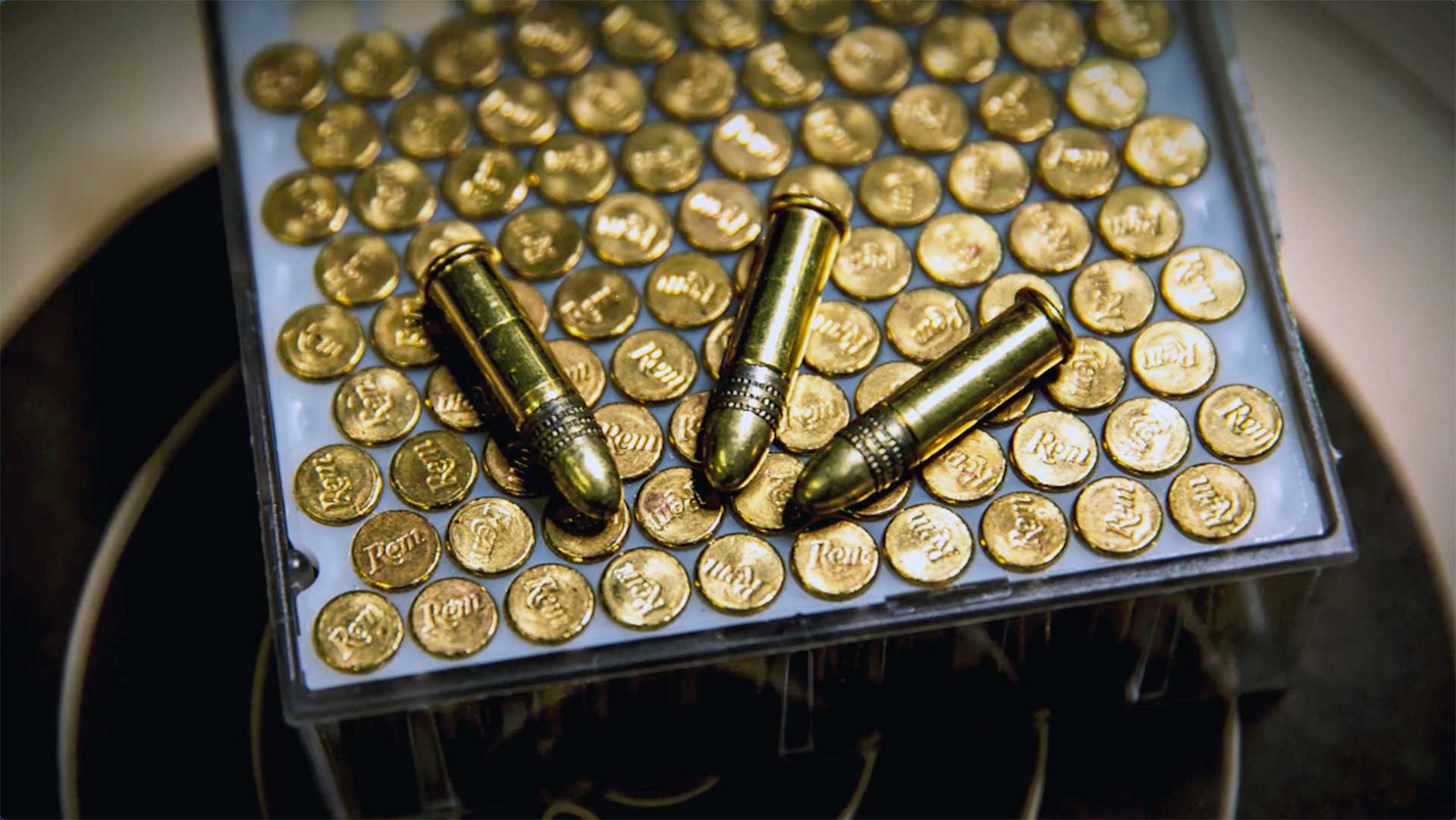The .22 Long Rifle is one of the most used cartridges on the planet. Billions of .22 LR rounds are produced every year, and Remington Ammunition in Lonoke, Ark., produces a significant chunk of the rimfire ammunition used by shooters around the world. Watch our "American Rifleman Television" feature segment above to learn how they make it and the people involved in that process.
"Here in Lonoke, where all the Remington ammunition is made, we have some of the fastest rimfire-making equipment on the planet," said Nick Sachse, director of product management, Remington Ammunition. "It's mind-boggling whenever you watch that equipment run. That was all in-house designed equipment, those shell-makers, those things are really spitting out product."

At the start of the process, making rimfire ammunition doesn't look all that much different from the process of producing a centerfire case or a shotshell cap. Brass cups are stamped out of large sheets of brass, and the cups then move onto have the headstamps applied and rims formed. Unlike centerfire cases, though, this is where the case-forming process ends for .22 LR. Next, the rounds move on to be annealed, washed and rinsed. Then the cases move onto priming.
"The manufacture of rimfire mix, we make it in about 20-pound batches, it's got certain chemicals in it to make the mix, and it's in a wet form, there's around 20-percent moisture, so it's really wet, and we put this mixture into 1-lb. cups, so we will transport it from our mix area up to the rimfire area," said Ronnie Evans, unit leader, Remington Ammunition. "We're getting pellets out of that mix and putting it into a tray, or plate. That plate is a certain thickness and it has a certain hole diameter for a volume. That volume in that hole is what we get a pellet from, and those pellet weights are what's important to get the proper amount of mix into each one of those primed cases."

The wet priming pellet is then pressed into an empty .22 case, and the case is spun rapidly, which spreads the pellet mix into the hollow rim of the cartridge. The primed cartridges are then sent to a drying house, where they'll sit for several days to allow the priming mixture inside the cases to dry. Once the cases are dry, each primed case is then examined by a camera, which peers into the open mouth of the cartridge and examines the case to ensure that each case is primed. Unprimed rimfire cases can be separated out during this quality-control check.
Once the cases are filled with powder and topped with a projectile, then comes the step of test-firing a sample size from each batch in order to ensure that the rounds are accurate, consistent and safe.

"Rimfire production follows a similar suit to the other loaders in our factory. The different being for rimfire testing, the sample sizes are generally higher. Our loading equipment is fairly unique, where we really need to shoot more per test than even SAAMI tells us we must," said Jimmy Lawrence, ballistics engineer, Remington Ammunition. "So, to assist with that, we actually have barreled actions on a Remington 40X single-shot platform, and the gunners don't have to manually insert and eject a cartridge like they would in a universal receiver, so they can gun with a handful of ammunition and load, fire and eject that ammunition almost as fast as you can fire from a magazine, once they get their dexterity tuned. The whole time they're firing, we're collecting the data through the transducer and across the velocity screens, and within no time, they have 50 or even 100 pieces of velocity and pressure, and we're concurrently measuring accuracy with those tests."
Ammunition is then packaged and shipped out to distributors, with those rounds joining billions of other rimfire cartridges on the planet and heading to target ranges and hunting fields across America.

"You know, CCI is the world's leader in rimfire. Federal's certainly a great, great brand in rimfire, too. Having the Remington brand in rimfire, it's just going to help the consumers," said Jason Vanderbrink, president, Remington Ammunition. "Rimfire is in high demand right now. Our job is to bring some expertise of how we think we can help Remington rimfire, but at the same time, don't change it. So, in the short term, our rimfire business is just to load as much as we can."
To watch complete segments of past episodes of American Rifleman TV, go to americanrifleman.org/artv. For all-new episodes of ARTV, tune in Wednesday nights to Outdoor Channel 8:30 p.m. and 11:30 p.m. EST.
























